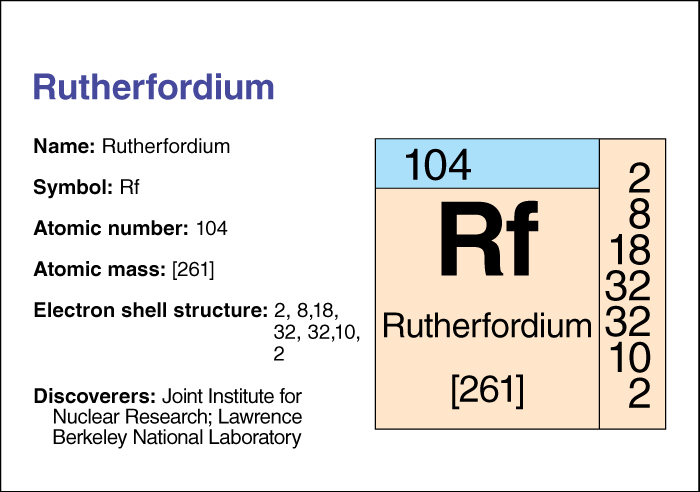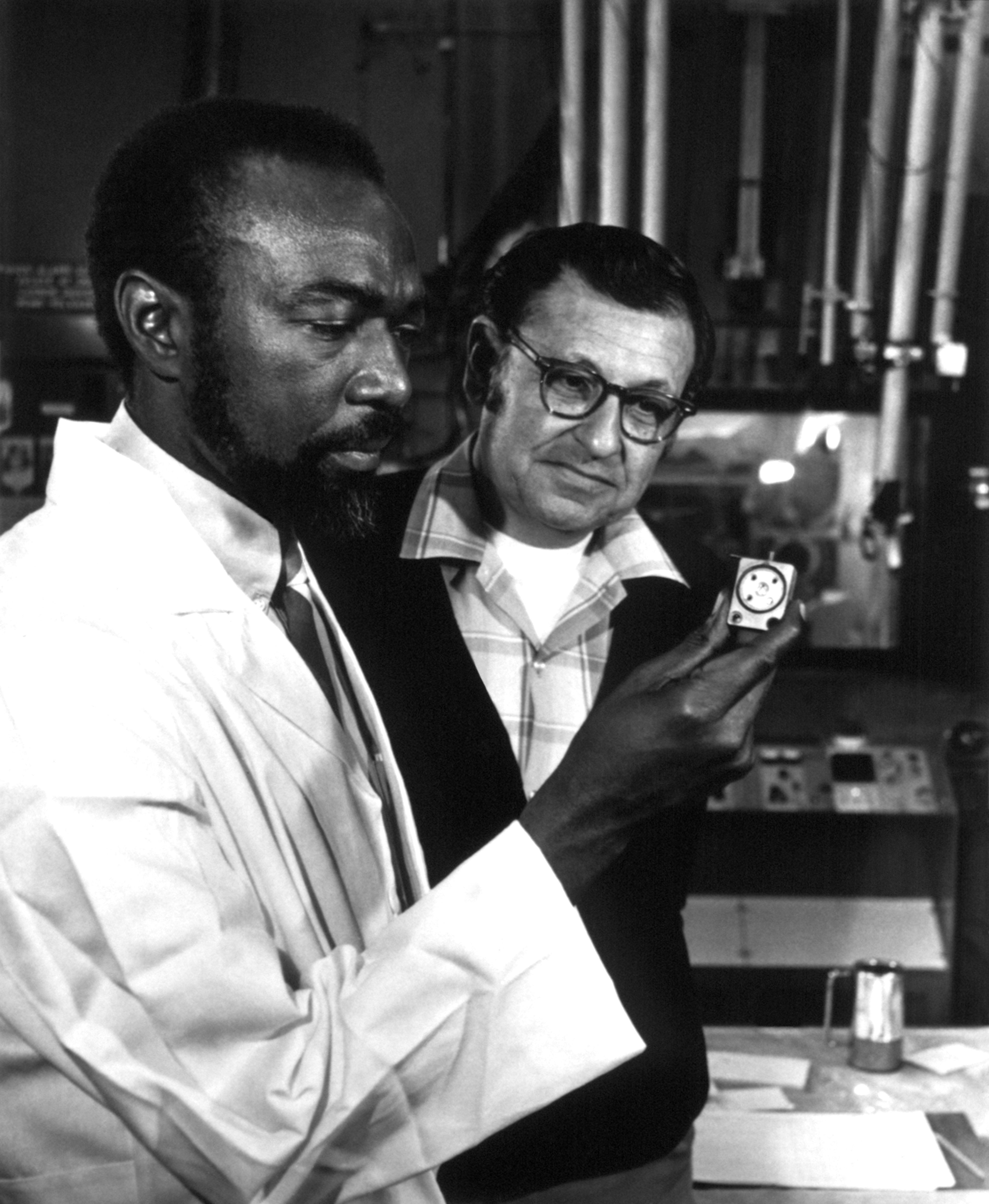Rutherfordium is an artificially produced radioactive element with 104 protons—that is, with an atomic number of 104. Scientists have discovered many isotopes of rutherfordium. Different isotopes of an element have the same number of protons but different numbers of neutrons. The most stable isotope of rutherfordium has an atomic mass number (total number of protons and neutrons) of 261. This isotope has a half-life of 65 seconds—that is, due to radioactive decay, only half the atoms in a sample of isotope 261 would still be atoms of that isotope after 65 seconds.

The symbol for rutherfordium is Rf. Chemists classify rutherfordium among the transactinide elements . For information on the position of rutherfordium on the periodic table, see the article Periodic table .
In 1964, scientists at the Joint Institute for Nuclear Research in Dubna, near Moscow, claimed they had produced the element. Dubna was then part of the Soviet Union and is now in Russia. The Soviet scientists had bombarded plutonium, whose atomic number is 94, with neon, whose atomic number is 10. From 1966 to 1970, Dubna presented additional claims for the element. In 1969, scientists at the Lawrence Radiation Laboratory (now Lawrence Berkeley National Laboratory) in Berkeley, California, made a rival claim. The Americans had bombarded californium, whose atomic number is 98, with carbon, which has an atomic number of 6.
In 1986, the International Union of Pure and Applied Chemistry (IUPAC) and the International Union of Pure and Applied Physics formed a working group to review the histories of the elements with atomic numbers from 101 to 109. IUPAC is the recognized authority in crediting the discovery of elements and assigning names to them. The group concluded that the Berkeley claim and a 1969-1970 Dubna claim—but not the 1964 claim—were strong. In 1993, IUPAC accepted the group’s recommendation that credit for the discovery be shared by the two institutions. Disagreements about what to name the element delayed an official naming until 1997, however.

Rutherfordium is named for the New Zealand-born physicist Ernest Rutherford . Before being named, rutherfordium was commonly referred to as element 104.
